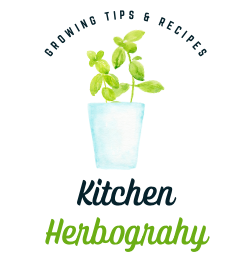As an Amazon Associate I earn from qualifying purchases. This website also participates in other affiliate programs and may earn commissions if you shop through the links used on this website.
(This article was originally published on August 17, 2021 and was last updated on September 3, 2022)
If you’re anything like me, basil is one of the first culinary herbs you grew in your garden (or patio or kitchen!). It’s cheap, fairly easy to grow basil, versatile in its uses, and is, of course, delicious once you get to the coveted “harvesting a massive bounty of basil” stage!
Most beginner basil enthusiasts pick up an established young basil plant from the supermarket or garden center, and there’s certainly nothing wrong with that.
But if you’re ready to take your basil obsession to the next level, don’t have readily available and mature plants to buy or even grow from a cutting, or want a more specialized type of basil for your kitchen, you might want to try growing basil seedlings.
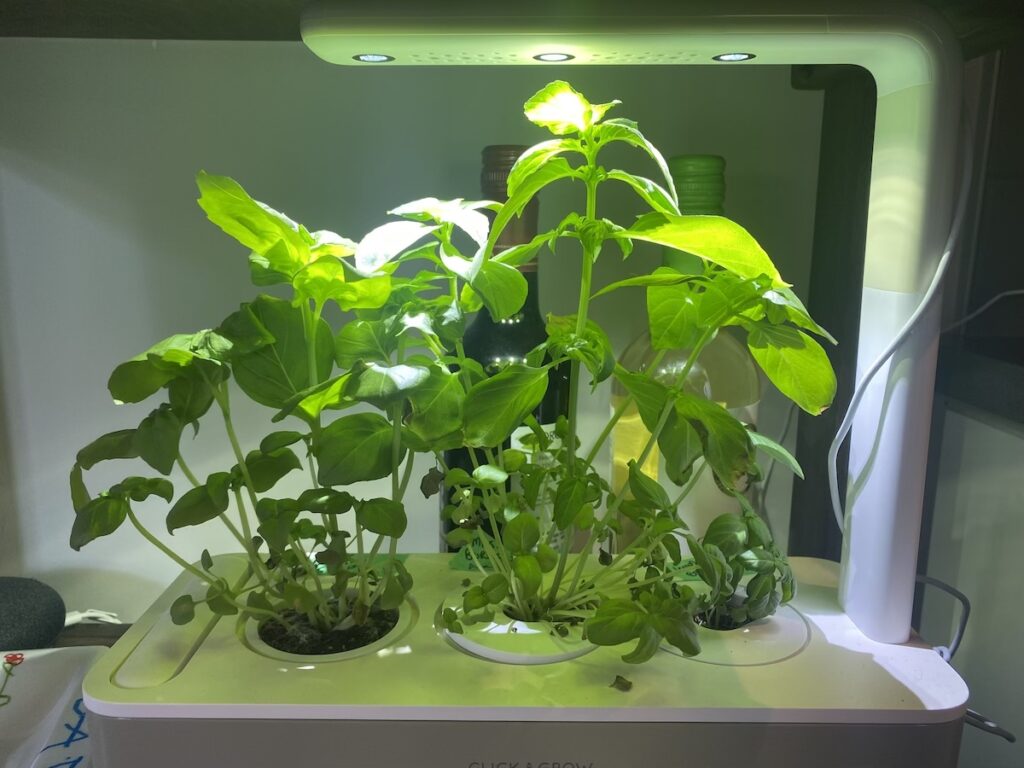
If you’re wondering how to grow basil from seed, and what types of basil and conditions work best, this article is here to help!
Why Grow Basil from Seed?

Growing basil seedlings doesn’t need to be intimidating, and has a number of clear benefits:
- Saving money. If you grow basil plants on your own, you’ll find it’s much cheaper than buying an established plant or using a smart hydroponic garden (which I definitely do also!). It gets even cheaper if you collect and save basil seeds year over year.
- Increasing the varieties of basil you can grow. Most supermarket basils are Genovese basil. But what if you want to grow basil varieties, such as Thai Basil or Lime Basil plants? Growing basil from seed lets you experiment with more species – and therefore, flavors – of basil. This gives you endless leeway to experiment. Grow multiple varieties at once, and harvesting basil will become a creative expression to try with your favourite pesto, pizza, pasta, or salad recipes!
- Growing basil (both from an established plant or from seed) can also benefit you and your garden. Basil plants are a natural mosquito repellent, so the more basil plants you grow, the fewer pesky mosquitos you’re likely to find in your garden.
Is it Hard to Grow Basil Plants from Seed?
This is the most beautiful part about planting from basil seeds – they’re easy to grow, even for beginners, and it’s a nice introduction to herb planting, gardening and harvesting.
Below, our guide to growing will show you how to get started.
Different Types of Basil Plants You Can Grow
In North America, the most common type of basil is sweet Genovese basil (Ocimum basilicum). This is the variety you’ll naturally want to toss onto your freshly made pasta dish, or use to make a mean classic pesto.
However, if you want to experiment and plant basil on your own, there are plenty of other interesting varieties to grow. Here are just a few out of many types of basil you might try growing from seed:
- Napoletano “lettuce leaf” basil – a variety of sweet basil with large, crinkled leaves. Popular to throw into salads.
- Cinnamon Basil (Mexican Basil) – This variety is smaller than sweet Genovese basil, with narrower leaves, a dark stem, and purplish flowers. As you might suspect from the name, it’s got a slightly spicier, cinnamony flavor to it. Great choice for cocktails, baking, fruit and green salads, and if you’re cooking Indian or Asian food.
- Thai Basil – These plants are a delicious addition to any SE Asian dishes you plan on making. Hello, homemade pho or Asian Rice Bowl (or these Thai basil recipe ideas here). It also looks, smells, and tastes beautifully, with purple stems, green leaves, and notes of anise and clove.
- Red Basil – Red basil has a stronger flavor than regular sweet basil, and makes a nice addition anywhere you’d add regular basil, but with more flavor. The color also adds a lovely visual twist to different dishes where you’d typically expect green leaves.
- Lemon Basil – With a characteristic citrusy flavor (hence the name), this variety is great on salads and in soups, and pairs well with fish and poultry. Lemon pepper chicken with lemon basil, anyone?
- Holy Basil – Another variety that’s popular in south Asian dishes, Holy Basil is often used in dishes from the Indian subcontinent and SE Asian countries. In addition to being aromatic and delicious, it’s also used in Indian herbal medicine to treat a range of conditions.
- Dwarf Basil – With a slightly more peppery flavor than regular sweet basil, and a more bushy, compact growing shape, add this to savoury, peppery dishes.
- Purple Basil – Purple basil is beautifully colored, and looks great to add a twist to pesto compared to standard Genovese. It’s slightly spicy, as well, offering a different flavor to enjoy.

The above are far from a comprehensive list of the different types of basil you can grow from seed at home.
However, when looking at the massive variety of basil that’s out there, it’s easy to see why choosing to plant basil and grow from seed gives you more options for your garden and your kitchen!
How to Grow Basil from Seed
Planting basil from seed is easy. You don’t need anything special, and it’s one of those things that even beginners can do.
You can grow basil from seed indoors in growing trays, in a larger container, or even directly in your garden. Follow the step in our guide to growing below.
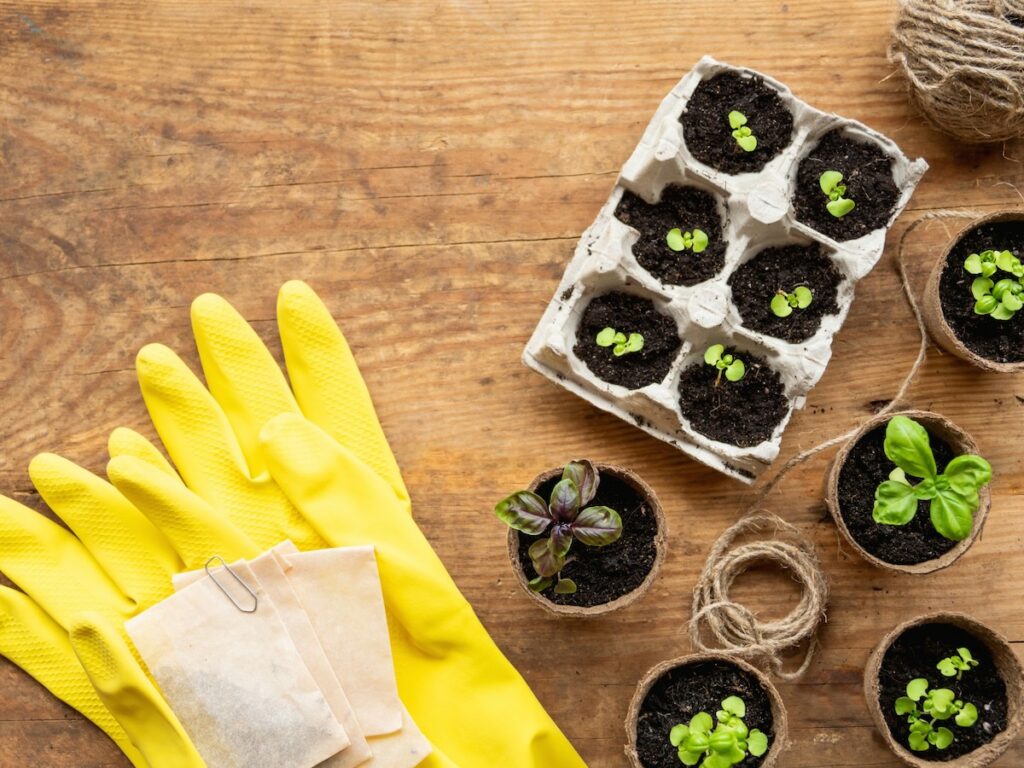
Here’s how to grow basil plants from seed in growing trays
- Prepare your growing trays by filling them with a seed starting mix from your garden center (you can also buy online from places like Amazon). Use a sterilized mix so you can be sure there aren’t any bacteria or other pathogens in the mix that could damage the fragile seedlings or cause damage such as holes in the plant leaves or black spots, white spots, or brown spots on the leaves.
- In each growing cell, place 2 to 3 seeds about 1/4 to 1/2 inch into the soil, and then tap down the layer of soil over top. You don’t need to soak basil seeds before planting.
- Water the soil so it’s moist, but not wet. Because the seeds don’t have roots reaching down to the bottom of the tray, you don’t need the water to reach down to the bottom either – it should be moist down to the 1/4 to 1/2 inch level at which you planted your seeds.
- Maintain consistent and favorable conditions for the seeds to germinate. This means warm conditions (around 21°C / 70°F is the minimum – which means you’ll probably be growing indoors to start, depending on climate), and consistently moist soil to thrive and prevent leaves that are droopy or wilting. You can use plastic wrap to cover the seeds, or buy a vented propagator dome designed to fit over seedling trays, but be sure to remove the covering after about 5 to 7 days when the seeds germinate.
- Once the seedlings grow to the point that they have one set of true leaves each, thin out the cells to leave just 1 seedling in each propagator cell, and continue to grow, regularly watering your basil so the soil is consistently moist but not soggy.
- Once the seedlings have grown to around 15 cm / 6 inches (around sets of leaves), start pinching back the top set of leaves encourage them to grow new stems, and become bushy, full and strong with a massive yield of basil leaves!
- Transplant, planting basil into progressively larger plant pots, getting the roots well buried each time you transplant.
- Regularly harvest your basil. Harvesting basil encourages healthy growth, maximizes yield, and delays basil plants from flowering.
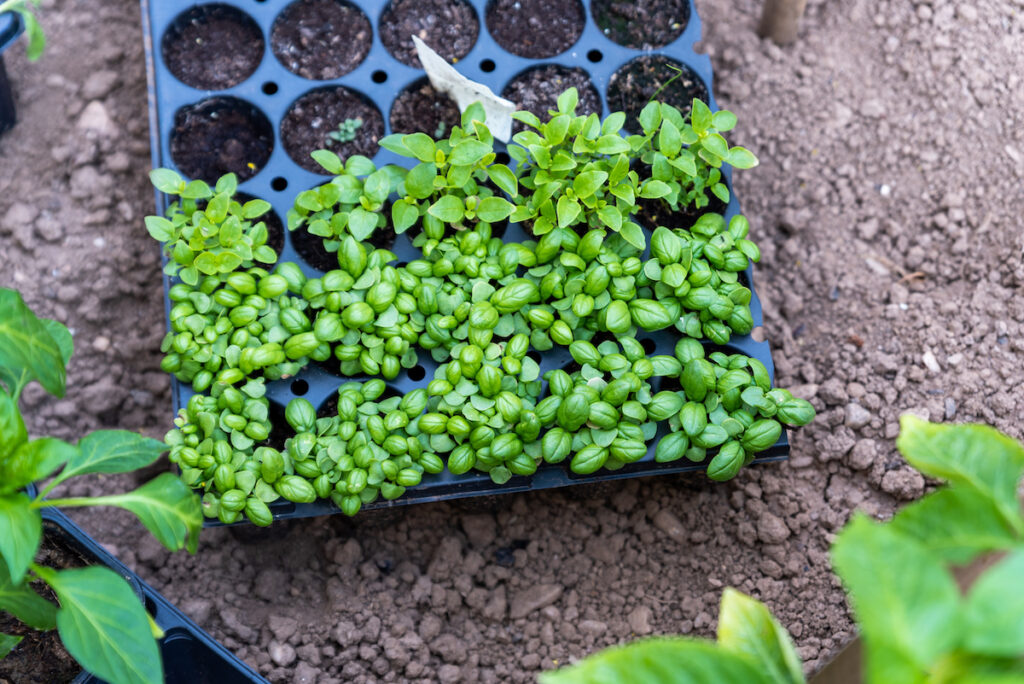
When to Transplant Your Basil
Note, if you plan to transplant your basil plants from a propagator tray to indoor pot, and then to your outdoor garden or a patio pot, you need to pick the right time of year to grow. Basil is a perennial herb, and doesn’t like frosty weather or the winter…at all!
Late spring, about 6 to 8 weeks before the last frost in your area, is ideal, if you plan to grow in a starting tray and then transplant the seedlings.
By starting the growing process 1.5 to 2 months before the last spring frost, the basil seedlings will be ready to transplant to a suitably sized outdoor pot or directly into your garden in summer.
Find out your frost date here.
Should I Heat Basil Seedlings from Below?
No doubt, basil grows best when warm, and using heat under the seedling container will speed up your seedling’s germination and growth.
If you decide to use heat, you can buy all-in-one germination kits that include a heating mat, propagation tray, and humidity dome
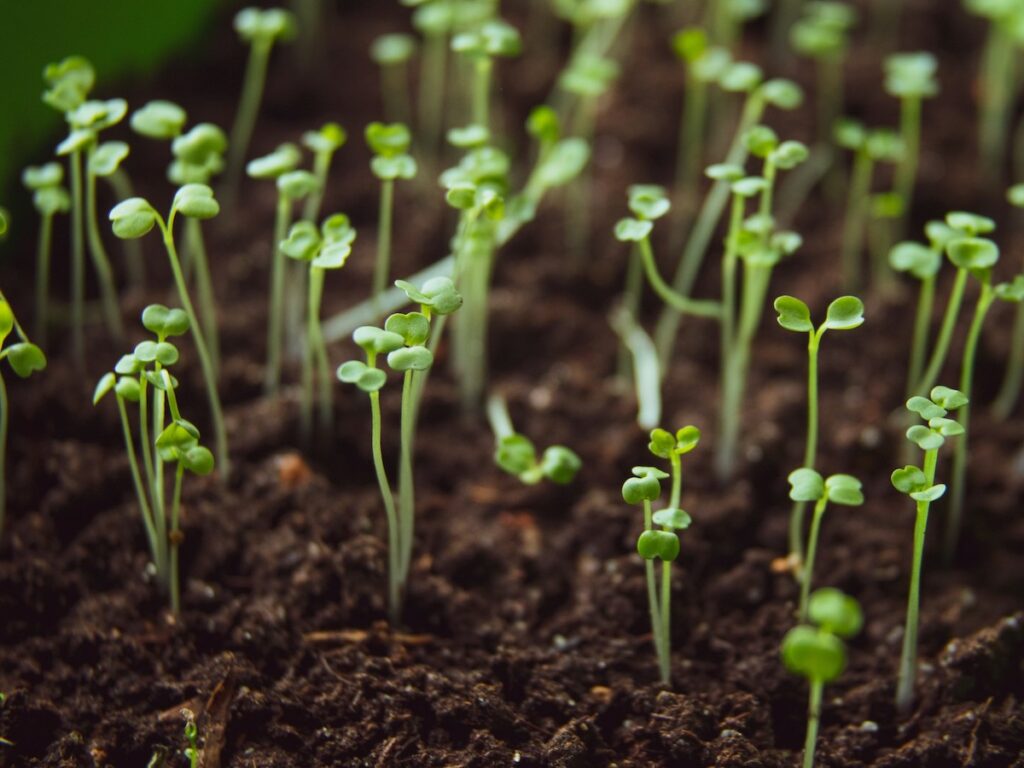
Here’s how to grow basil plants from seed directly in a pot
You don’t have to use a propagation tray to grow healthy basil seedlings. If you’d prefer to start the seeds in a larger container so you don’t have to transplant them, here are the steps:
- Prepare a pot with adding a high quality potting mix. Since you won’t be transplanting the seedlings, you need actual soil in the pot, as compared to using soilless starting-mix when growing in a seed starting tray. You also need to make sure it is well drained, as basil doesn’t like standing water or overly soggy soil.
- Lightly tamp down the soil with your hands.
- Sprinkle basil seeds into the soil. Because basil has a 60% germination rate, and each seedling grows at a different rate, it’s easier to start with more seeds, and thin them out if necessary.
- Sprinkle a bit of soil on top of the seeds, and give them a light spray of water. You want the soil to be moist, but not wet, and you don’t want any sitting water that could get stagnant or encourage mold.
- Place the pot indoors, and somewhere in your house that’s fairly warm.
- You can cover your pot with a bit of plastic wrap to encourage consistent humidity, or you can simply stay on top of checking the soil moisture, and watering as needed. Up to you, but covering it also does increase the risk of mold, so you need to stay on top of it either way.
- Around Day 5 to 7, your seeds should sprout, and you’ll have a tiny basil seedling to care for.
- When growing indoors from seed, you might want a grow light. Ideally, turn the light on on the same day the basil seedling starts to break through the soil. Remember, basil needs 6 to 8 hours of sunlight per day outside, but is happy with up to 12. Generally, set the light for 12 to 16 hours of light and at least 8 hours of dark when planting and growing indoors.
- After 5 to 6 weeks, you should have a huge bushy plant with plenty of true leaves. You need to harvest basil to keep it healthy, so trim back to have about 2 leaf nodes remaining. As it grows, continue to water basil daily, with a bit of organic fertilizer if you want.
How Many Basil Seeds Should I Use when Starting from Seed?
If you’re wondering how many seeds to plant when growing basil from seed in a pot, I suggest you don’t overthink it.
While I’ve seen some advice that’s very specific (i.e. only use 5 or 6 basil seeds per pot, and then thin the plants out once they have a few sets of true leaves), in my experience it’s perfectly fine to sprinkle more basil seeds into the soil, and allow a few more plants to grow together.
They will grow at a different rate, so in my view this gives a huge bushy pot of basil, and you always have some ready for harvest!
I put like 15 seeds in this pod and while it’s crowded, it works! If I was planning on transplanting outdoors I would separate the plants before replanting.

Here’s how to grow basil plants from seed directly in your garden
If you plan to sow the basil seeds directly in your garden (bypassing the trays and not growing indoors), the main thing to know is you need to wait until early summer, once the soil in your garden has warmed up and the last frost has passed.
Bottom Line? If you live in a warm climate, you can plant in late spring. If you live in a cooler climate, wait until early in the summer.
Frequently Asked Questions About Grow
What does basil look like when it first sprouts?
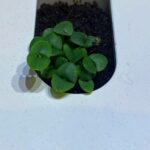
When basil first starts growing, the basil micro greens consist of a delicate, light green shoot with more vibrant green leaves. The small leaves are shaped like spades, or like a half-oval shape. As it grows, basil quickly transforms to look more like a mature plant that’s simply shorter.
How long does it take for basil to sprout?
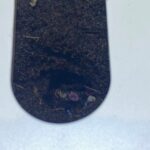
On average, expect your basil to germinate within 7 to 12 days after planting. From there, you can expect to have a mature basil plant within a month or so. However, if you have ideal planting conditions, basil can sprout faster. Using a smart garden system such as a Click and Grow, basil will sprout as soon as 3 or 4 days after planting.
How can I make basil sprout faster?
Creating ideal growing conditions may encourage your basil to sprout more quickly. This includes keeping the plants warm, and ensuring they have enough sunshine and adequate water. Plant in-season when the soil is warm, and if planting in pots move them indoors at night or during cold snaps. If necessary, use a seedling heating mat. You’ll also want to ensure the seedlings get 6 to 8 hours of sun per day, and keep the soil moist but not wet.
How long does it take for basil to grow its first set of true leaves?
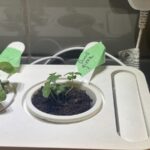
Expect your basil plant to grow its first set of true leaves 3 to 5 weeks after planting.
What Can I Use as Growing Trays for Basil Seeds?
If you plant on growing your basil from seed in a seedling tray indoors, there are plenty of options. For DIY options, you could make your own little pots out of newspaper or reuse paper egg cartons. For store bought options, you can buy plastic trays, OR seedling cells made from an organic material such as coconut coir. These organic pots are plantable, which means when it comes time to transplant your seedling to a larger pot, you can simply plant the coconut coir or peat pot, and it will decompose over time, usually within 2 weeks of transplanting.
What is Basil’s Germination Rate?
Basil isn’t difficult to propagate from seed, but it does have a lower germination rate than many other seeds. With a germination rate of around 60 percent, for every cell you plant with 2 to 3 seeds, you probably won’t get 2 to 3 successful seedlings. Basil may also germinate at different rates, depending on where you plant it. When growing indoors, you should see some germination within 5 to 7 days, and the plants may be ready for the first harvest within 5 to 6 weeks. If you direct sow basil seeds (i.e. plant them directly in the garden), however, it may take more like 6 weeks to 2 months before they are ready to harvest.
Do I Need to Thin my Basil Plants?
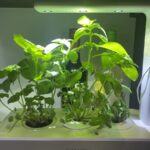
Despite a germination rate of only 60%, you’ll most likely have to do some thinning once the seedlings get their first sets of true leaves. Once you get to this stage, you’ll want to thin the cells out – 1 seedling in each cell, so they have enough space each. When thinning, you might be able to harvest as microgreens.
How to transplant basil seedlings to the garden?
If you plan to sow them directly (i.e. plant in your garden), you need to pay attention to your growing season in your area, and know your frost date. Sow them in early summer, once the soil has warmed up. If you grow in a propogating tray, don’t transplant the plants to your garden until the weather is consistently more summer like, and the soil has warmed up for the season (65 to 70 degrees is suitable). Wait to transplant until at least a week to two weeks past your last frost, and ideally until the soil has warmed up a bit.
How long will my basil plant last for?
Outdoors, it will last from the beginning of summer until the first frost, so long as you prune regularly and cut back the flower buds and prevent it from flowering too much (which reduces growth and harvest). If the plant stays outdoors past the first frost, the cold temperatures will kill it. Indoors, however, basil is one of those herb plants that can last awhile, as long as you offer adequate light, water, and warmth, and are diligent about pruning and keeping it from flowering. While your basil plant won’t last forever, even indoors, you should be able to keep it growing in pots for a good while, even up to a couple of years if conditions are favorable.
What kind of conditions are needed to plant basil seeds?
Basil requires full sun, and can survive with 6 to 8 hours of direct sunlight per day, and thrive with even more. It also needs consistently moist but well-draining soil conditions and warm temperatures (it doesn’t tolerate frost or being overwatered – it will turn yellow if overwatered and may develop root rot). You can achieve this by growing in plastic or natural pots indoors, outdoors, or directly in your garden. However, if you sow your basil seeds directly in your garden, you’ll need to ensure proper conditions.
When do you repot basil seedlings?
When your basil seedlings start to outgrow their seed-starting pots, you’ll need to transplant the basil pots, either to your garden or into larger pots. This is doubly true if you planted several seeds in each seed-starting pot (a common practice). Re-pot your basil when the plant has grown a set of true leaves, and before any seedlings that are sharing the pot start to get their roots tangled together. In terms of timing, you’ll likely need to transplant your basil seedlings 4 to 5 weeks after planting from seed.
When to move basil outside?
If you plan to move basil seedlings outside, wait until your plant has matured and has 2 sets of true leaves, and the conditions are right. Namely, basil thrives in warm soil with lots of sun, so check your soil temperature and wait until it’s at least 50°F/10°C or (ideally) warmer. If you can’t measure your soil temperature, use the temperature of the air at night: anything below 50°F/10°C is too cool to transplant your basil.
Final Thoughts About Growing Basil from Seed
I hope this guide to growing from seed has helped. Whether you want to grow basil indoors, and enjoy harvesting basil year round, regardless of the weather outside, or want to grow outdoors from seed, the article I hope this article is full of tips!
Growing basil indoors or outdoors from seed is a fairly easy project, so long as you give the basil what it needs. As you’ve hopefully seen from this guide to growing from seed, there are plenty of different ways to achieve success – you just need to choose one that works best for you!
